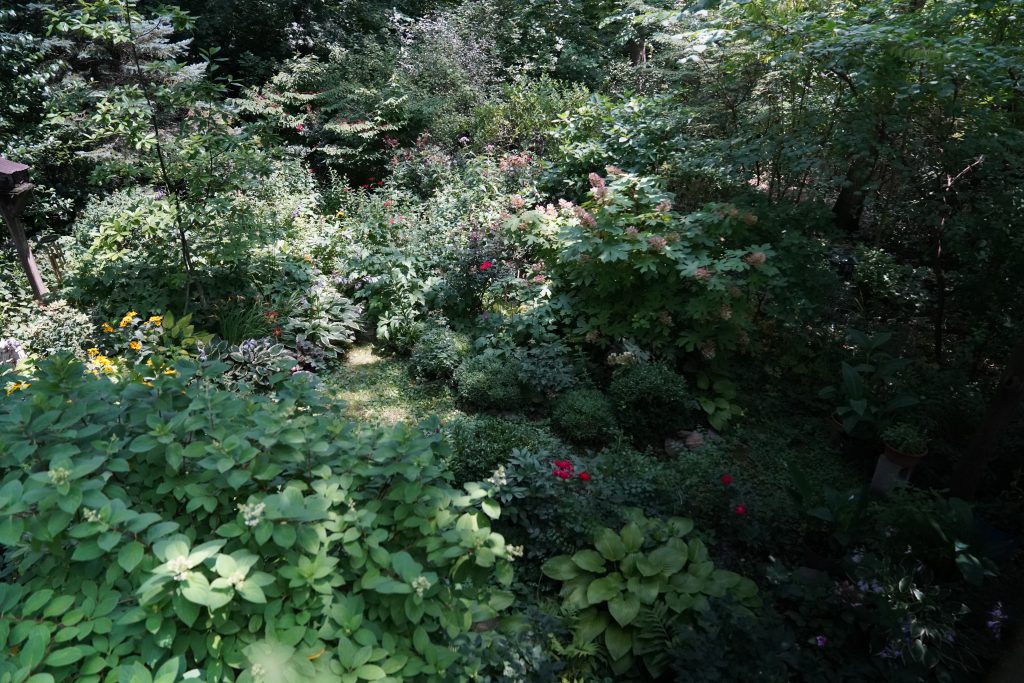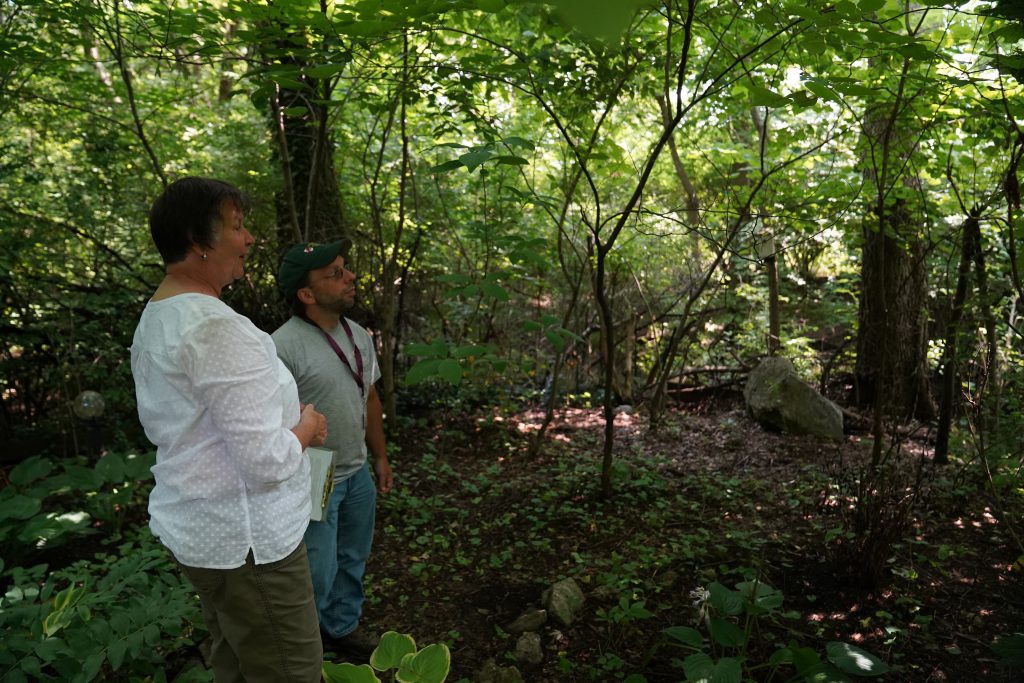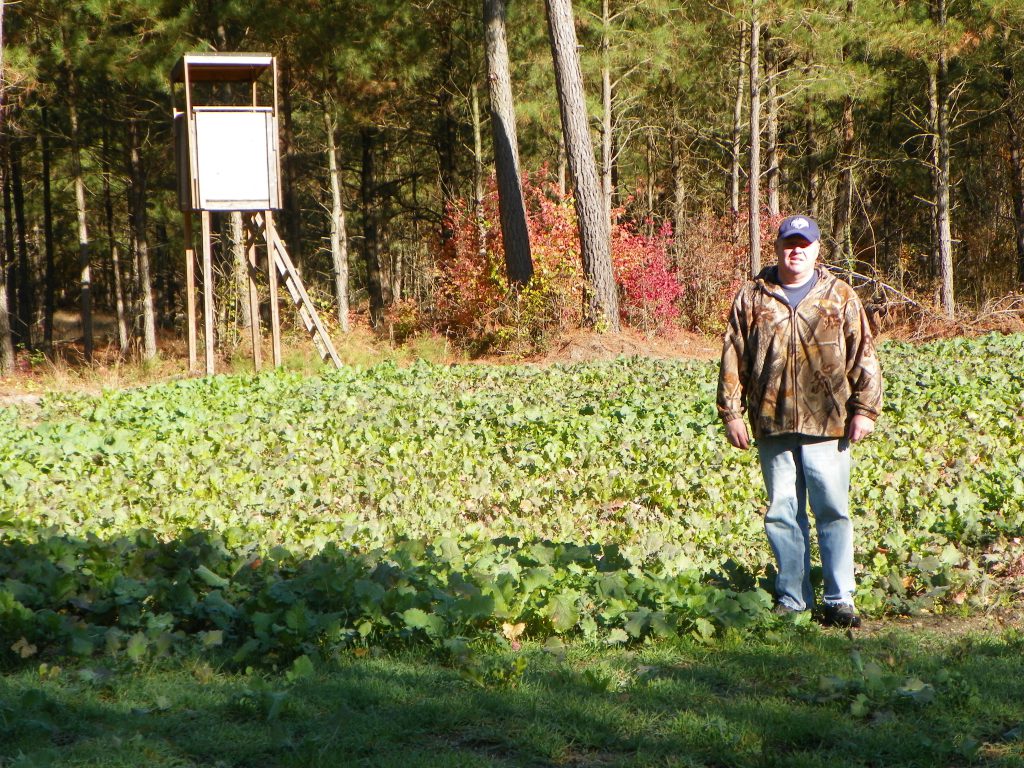Planting for Success: Forest Service Helps Marylanders Get Trees in the Ground
Ah, springtime. The birds are singing, the sun is shining, and foresters across Maryland are planting trees! Whether it’s through the Maryland Forest Service’s seedling giveaway program Backyard Buffers, or getting students and schools planting through Tree-Mendous, the Forest Service’s mission of getting trees in the ground never stops. With at least 72% of forests in Maryland owned by private landowners, our citizen woodland stewards are yet another valuable partner in tree-planting efforts. Here we take a closer look at several programs that help people plant trees.

Sharon Bonddroff planted this lush vegetation lining a path more than 10 years ago. By James Mackey, Jr.
Backyard Buffers: Providing Free Seedlings for Local Stewards
The Backyard Buffers tree and shrub seedling giveaway by the Maryland Forest Service is a popular program for good reason. At absolutely no cost, local residents can get a bag of 20-30 native seedlings to plant along any existing waterway on or adjacent to their property; from a river, to a creek, to a drainage ditch. Once established, this backyard ecosystem will create wildlife habitat, control erosion and runoff, and add aesthetic value.
To highlight the program, we wanted to showcase one longtime program participant who has created an amazing woodland garden. Sharon Bondroff is a Master Gardener and has been beautifying her backyard in Hagerstown with seedlings from the John S. Ayton State Tree Nursery in Preston for well over a decade. Just a handful of the wide variety of species Sharon has planted are shown below, and come next spring you can bet she’ll be planting again.
Visit dnr.maryland.gov and search for Backyard Buffers for more information.
|
Planter Profile: Sharon Bondroff, Washington County How long did it take you to design and plant this garden? When did you first start participating in Backyard Buffers? What’s your favorite part about Backyard Buffers? What’s most rewarding about planting this natural landscape? |
Maryland Tree Farms: Sustainably Managing Forests
Forest landowner partners help preserve Maryland forests and all of the resources they provide, from improved water quality to wildlife habitat to forestry wood products. We are committed to recognizing these important stakeholders in keeping our forests healthy and thriving. Each year, the Maryland Forest Service works with hundreds of woodland owners across the state to help them plant trees on their property. In the most recent planting season, the department worked directly with landowners to plant 276,000 tree seedlings and indirectly contributed to the planting of another 250,000 trees through agency programs. This represents tree planting on approximately 1,200 acres across the state.
One of the programs available to plant tree seedlings in rural areas of the state is the Maryland Tree Farm program. Participants in this program are woodland owners with at least 10 acres of woodland who desire to sustainably manage their forest for the future, and by doing so, to improve the Chesapeake Bay watershed. One of these Tree Farm Program participants is profiled below. Mr. Culp and his family are a perfect example of the dedicated forest stewards that the Maryland Forest Service is fortunate enough to team with in keeping Maryland forests growing and sustainable for generations to come.
|
Planter Profile: James Culp, Worcester County How long have you been in Worcester County? Why is your land and forest important to you? When and how did you get involved with Maryland’s Tree Farm Program? How did you learn about the program? How many forested acres do you have? Can you briefly describe your forest type/composition? Would you recommend the Tree Farm Program to other landowners? What is your favorite feature of the program? |
Tree-Mendous: Beautifying Through Community Engagement
From parklands to schoolyards, the Maryland Forest Service’s Tree-Mendous program makes our state’s communities more beautiful and ecologically healthy through tree and shrub plantings. This program within the department’s Urban and Community Forestry division has been planting for the public since 1989. To date, more than 3,000 towns, communities, schools, and parks have been engaged in plantings and partnered with the Forest Service to help clean their air and water and beautify their neighborhoods. By providing native trees at a reduced cost, Tree-Mendous gives Maryland citizens a great opportunity to give back to their community while doing their part to restore their local landscape.
The driving force behind this program is Tree-Mendous Director Anne Gilbert, who has been in charge of the program since 2014. From coordinating delivery of planting stock to finding the right nursery to partner with Tree-Mendous, she has kept up with the many demands and challenges that come with getting trees in the ground across the entire state, all while successfully growing and promoting the program.
|
Planter Profile: Anne Gilbert, Maryland Forest Service How did you end up in the field of forestry? Why do you enjoy this work – and working with Tree-Mendous in particular? It’s very important to get citizens engaged in planting native trees and shrubs, but it is equally important to take proper care of the trees we have and take the time to care for the trees we do plant. While planting trees is the main part of my job, I think it is equally important for everyone to learn to identify native trees and understand the impacts of invasive species. How would a person get involved in or learn more about community and urban forestry? If you want to plant trees it is important to think about the site before selecting a tree—is it wet, dry, shady, sunny? A little research can go a long way for the tree’s long term success. Can I get a tree planted through the Tree-Mendous Program? The Marylanders Plant Trees coupon saves $25 off the price of a tree with a retail value of $50 or more at participating nurseries. If you know a nursery that is not on our list feel free to have them reach out and we can get them signed up to participate. There is no limit on the number of coupons an individual can use, as long as each has a signature. If you don’t have time or space to plant a tree, you can still participate in Tree-Mendous and help grow Maryland’s tree canopy through the Gift of Trees program. For every $40 donated a tree is donated to a small local government without funds to plant trees or a community group planting on public land. All Gift of Tree trees will be planted on public lands. |
Francis Smith is a natural resources planner with the Maryland Forest Service. Appears in Vol. 23, No. 1 of the Maryland Natural Resource magazine, spring 2020.




 1-888-373-7888
1-888-373-7888 233733
233733